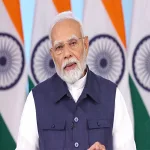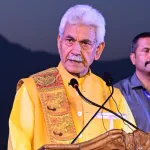On 20 June, the Indian External Affairs Minister, Dr S. Jaishankar visited Sri Lanka on his first official visit after his reappointment. The highlight of the visit was the commissioning of the Maritime Rescue Coordination Centre (MRCC), which is being built with the help of a US$6-million grant from India. With a centre in Colombo, a sub-centre in Hambantota, and multiple installations throughout the country, Sri Lanka welcomed this assistance and expressed confidence in deepening maritime security cooperation. This welcome gesture demonstrates a growing dilemma in Sri Lanka’s security calculus where it is opposing the ever-increasing power competition in the Indian Ocean Region (IOR) while leveraging its geopolitical location to further its security goals and interests. It is thus important to understand how the evolving maritime geography shapes Sri Lanka’s security thinking. Sri Lanka, a small island nation in the IOR, has been influenced by its geography since time immemorial. Its positioning (see Map 1) between Africa, the Middle East, South Asia, Southeast Asia, and East Asia not only influenced its economy and culture but also prompted extra-regional powers to play a crucial role in the country’s administration and domestic politics. From the campaigns of Cholas and Pandyas to the Portuguese, Dutch, and British colonisation, major powers have attempted to control crucial trade points and the economy. Sri Lanka’s positioning has thus shaped its politics, security calculus, and foreign policy. As a result, post-independent Sri Lanka has maintained a policy that avoids military alliances, refrains from conflicts in the IOR, and promotes the region as a “Zone of Peace”. This is also shaped by its non-alignment foreign policy that keeps the island nation from being drawn into power blocs, offers the flexibility to practice agency, and further its interests, and uphold its security and sovereignty. However, as the world order shifts from the West to the East and economies like China and India continue to rise, the IOR has become a crucial point of geopolitical churning. This increasing importance has placed Sri Lanka under a significant spotlight. Located strategically between the Strait of Malacca, the Strait of Hormuz, and the Strait of Bab-el-Mandeb, countries are trying to woo the island nation to increase their presence and secure their supply chains and crucial sea lines of communications. China’s geopolitical aspirations and economic growth increased its presence in the IOR since the early 2000s. This coincided with Sri Lanka’s isolation during the final phase of the Eelam war and its search for new partners for post-war development. For China, Sri Lanka offered a crucial geopolitical and economic footing. It assisted the country with several mega-infrastructure and connectivity projects that were institutionalised with the launch of the Belt and Road Initiative (BRI). From 2005-2019, Chinese FDI culminated to US$5 billion, and finance (loans) increased from 0.45 billion in 2006 to 12 billion in 2019. Extensive borrowing with low prospects of returns also compelled Sri Lanka to offer the strategic Hambantota port and the Colombo Port City (CPC) project on a lease to China for 99 years (see Map 2). This economic leverage has increased Chinese presence in the region and compelled subsequent governments to be sensitive to its interests and aspirations. Multiple episodes of Chinese submarines and spy ships docking in the country illustrate how Beijing weaponises its investments and debt-restructuring negotiations to militarise the IOR. Even today, Sri Lanka owes nearly US$7 billion to Beijing—the highest amongst all the bilateral creditor. On the other hand, India, a traditional player in the region, has also increased its presence in Sri Lanka. The last two decades have witnessed China’s economic influence, political networks, and investments push back against India, with the Sri Lankan government seldom respecting Indian sensitivities. It was also due to the Rajapaksa brothers’ (2005–2015; 2019–2022) preference to work with China for domestic and economic reasons. However, the onset of the economic crisis in late 2021 saw India offering assistance of US$4.5 billion. It used the opportunity to increase its presence, influence, and connectivity with Sri Lanka. For instance, India will be operating the West Container Terminal of the Colombo port—adjacent to CPC, managing an airport in Hambantota, and likely running three more airports. India is also developing oil tanks in Trincomalee – another strategic city, and developing it as a regional hub. Other countries like the United States (US), Japan, France, Russia, and Australia have also increased their presence in the country to have a stake in the evolving great power politics. The US has also offered nearly US$500 million to help India develop the West Container Terminal. This crowding of the region is impacting Sri Lanka’s security and strategic calculations, therefore, placing its non-alignment and traditional security calculus under significant stress.
Sri Lanka & Indian Ocean Region

Sign Up For Daily Newsletter
Be keep up! Get the latest breaking news delivered straight to your inbox.
By signing up, you agree to our Terms of Use and acknowledge the data practices in our Privacy Policy. You may unsubscribe at any time.
Leave a Comment Leave a Comment
Stay Connected
Latest News
Recent Posts
- Mohsin Ali sets Khelo India Water Sports Festival alive with dream gold
- “Will save our society from harmful effects of online money games,” says PM Modi after Parliament passes Online Gaming Bill
- The voices of youth in J&K are now heard in stadiums, not in streets: LG Sinha
- Rupesh Kumar gets additional charge of Director Information, J&K
- CM Omar Abdullah hails inaugural Khelo India Water Sports as “yet another historic sports event in J&K”







